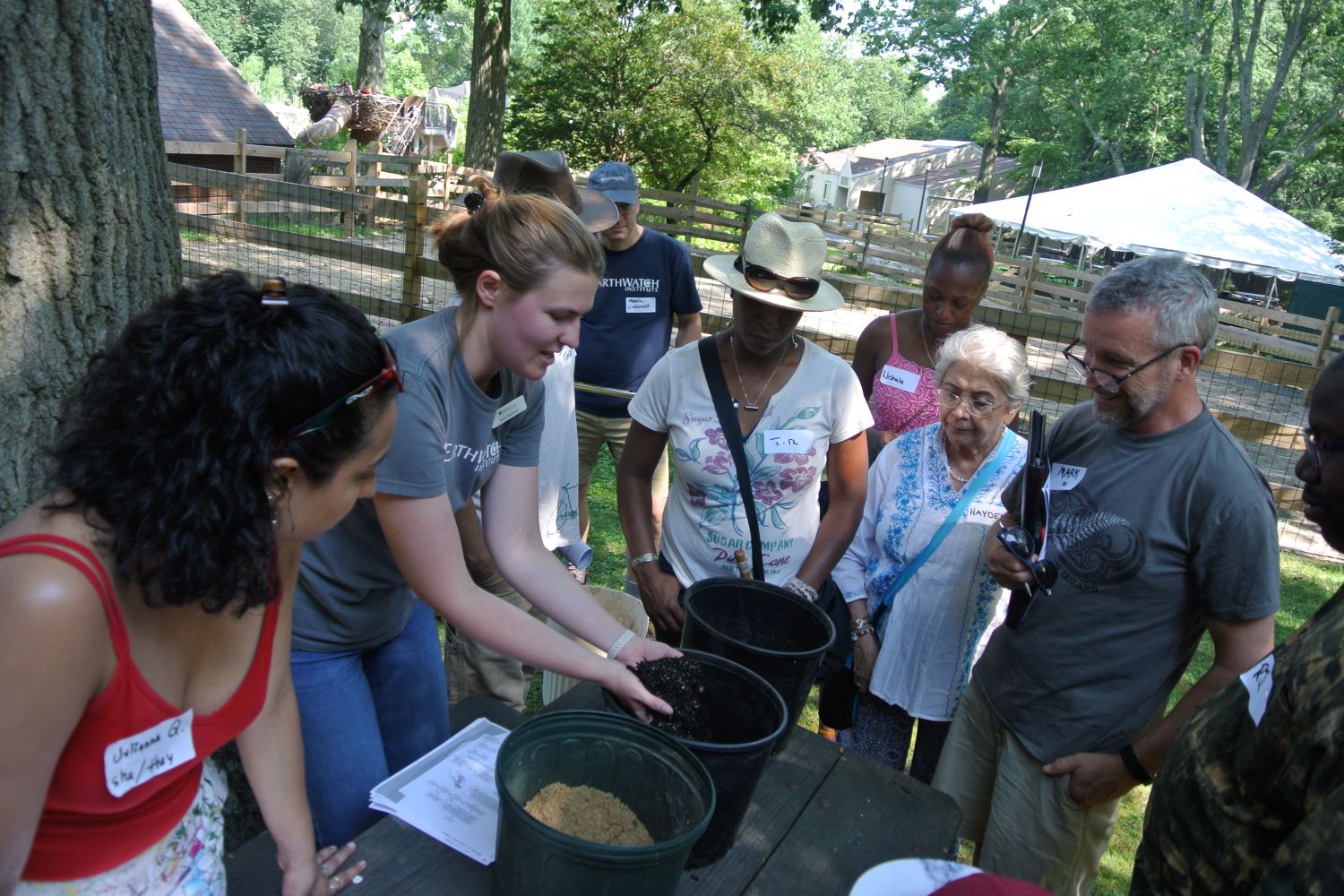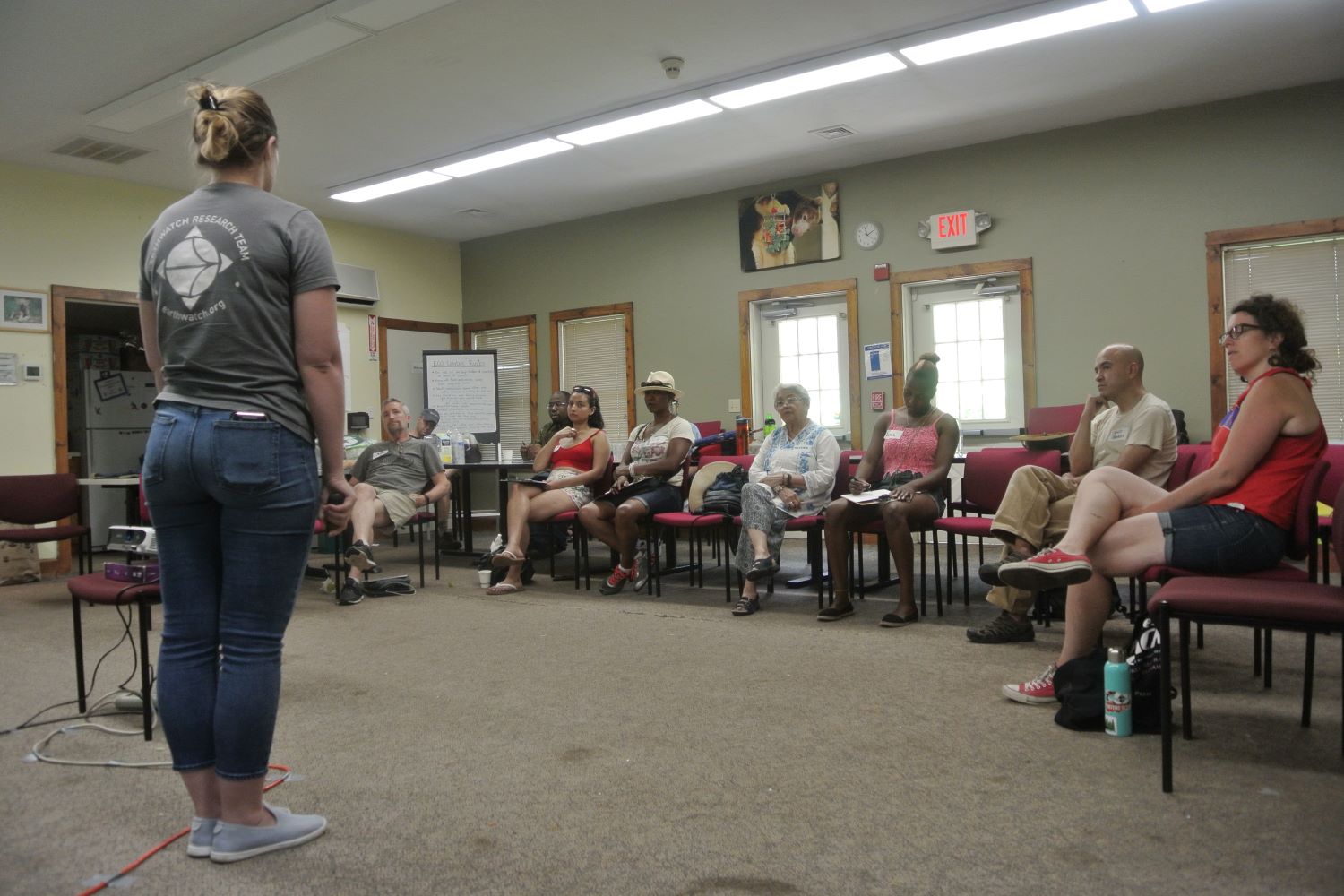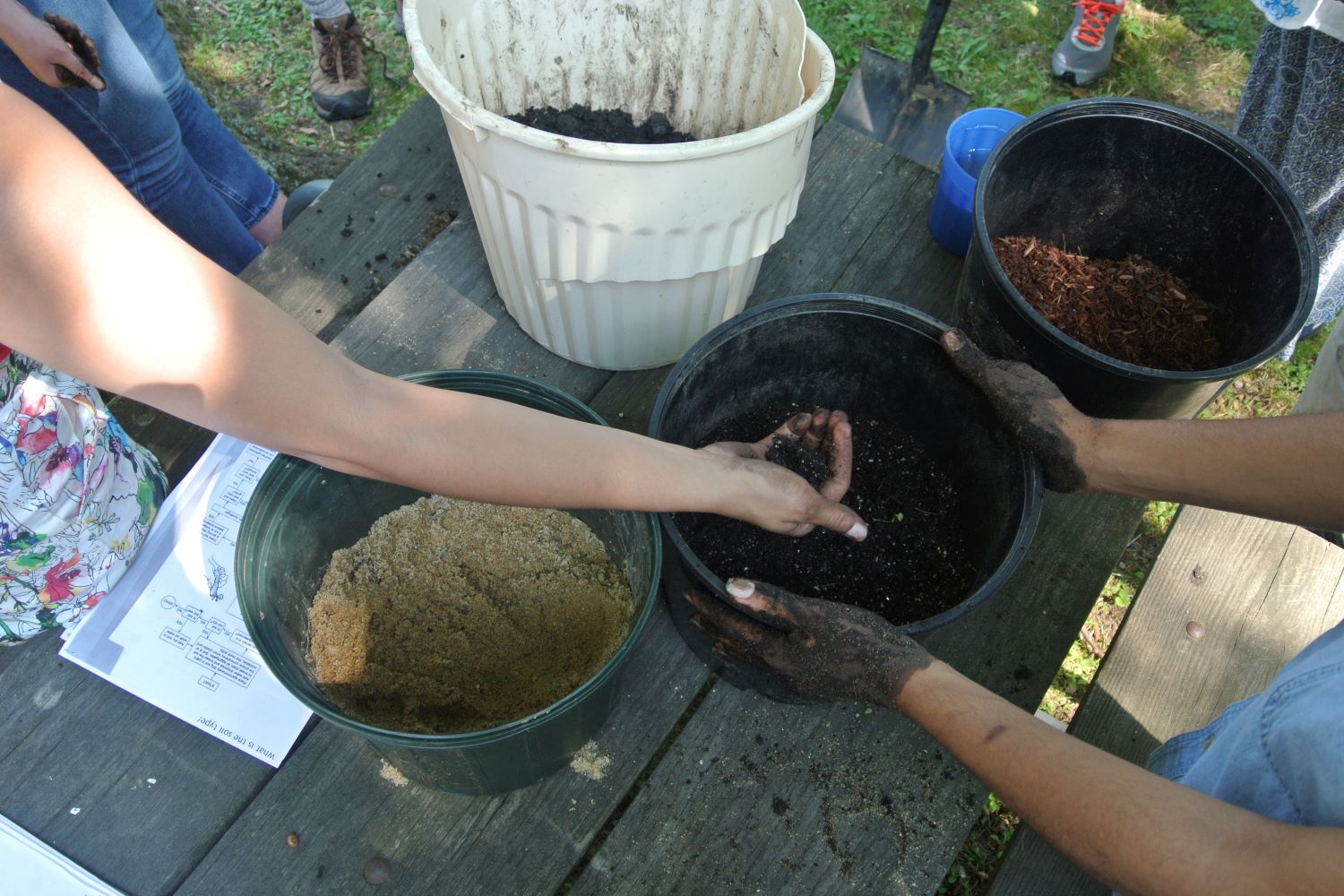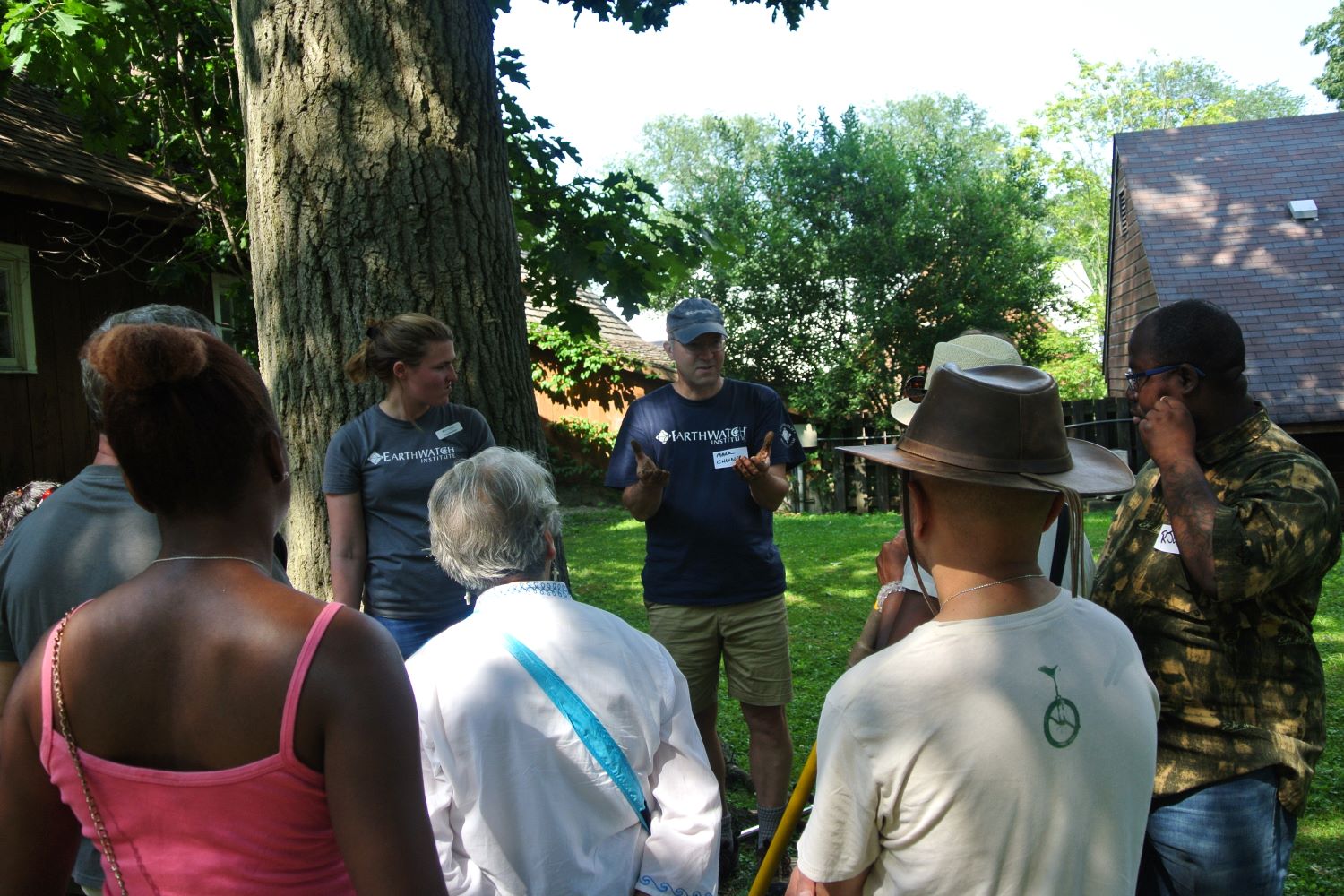.
RAIN at the Zoo
Earthwatch Launches Rain Garden Program at Franklin Park Zoo
By Ashley Junger, Earthwatch Science Writer
This summer, Earthwatch launched a new community engagement program: Raingarden Action in Neighborhoods (RAIN). Through in-class lessons and in-field trainings, we aim to inform and educate on the benefits of green infrastructure in order to help mitigate the growing impacts of climate change in cities, as well as increase human wellbeing.
Earthwatch is committed to addressing the pressing impacts climate change is having on urban environments. From deadly heat waves to flooding to pollution, cities are increasingly facing urgent threats. Over the last 20 years, Earthwatch has developed community science programs in cities aimed at empowering people in the areas most affected by climate change to take action and help make their communities more resilient. This summer, Earthwatch launched the newest iteration in our focus on Urban Resiliency, the Raingarden Action In Neighborhoods (RAIN) program.
When you think of a city, you probably think of thousands of people working, studying, and raising families within a landscape dominated by tall buildings and oceans of asphalt. But as cities are increasingly overheating and flooding, many people are exploring ways to change the composition of urban areas. Adding green infrastructure, like rain gardens, can help combat these issues, while adding pleasant greenery to the often bleak concrete jungle.
From a sustainability perspective, we’re trying to identify solutions that provide many benefits,” said Mark Chandler, director of research initiatives at Earthwatch. “Rain gardens are not useful only in terms of rainwater, but also the plants can help with pollinators and can help cool the environment through transpiration.
To help bring these benefits to the neighborhoods of Boston, Earthwatch, in partnership with the Franklin Park Zoo and Codman Square, launched the RAIN program. The free series of in-class and in-field lessons were designed to engage community members with the process of identifying where a rain garden should go, how big it should be, and how to create it.
.



.
“We want to influence the way people are thinking about city infrastructure,” said Anna Woodroof, Earthwatch program manager and lead RAIN instructor.
Twenty-three people participated in the program, learning the answers to questions like, “how do I know if I have the right soil type? What kind of plants do I need? How can I tell if my rain garden is working? Will I be able to take care of it? And, most importantly, what is a rain garden?”
If you walked by a rain garden, at first you might not notice anything different from a standard garden you’d see in a lawn or community center. There are just a few subtle, but key differences. First, rain gardens must be in a sunken area so water can flow in. Second, the plants in these gardens need to be able to tolerate both prolonged dry and wet conditions. Lastly, the soil needs to be a specific mix to efficiently drain and retain water.
While these differences may seem minute, they make an extraordinary impact on the garden’s ability to mitigate flooding. Frequent floods damage property and public infrastructure, while picking up pollutants and excess nutrients, like lawn fertilizer. This water often goes directly to storm drains, which then feed into streams, rivers, lakes, and oceans, further polluting these valuable resources. Rain gardens are a way of capturing this excess water, naturally filtering out pollutants and nutrients, and recharging groundwater reserves.
Through the RAIN events, participants were able to follow along and participate as the Franklin Park Zoo scouted sites, planned, and constructed their first rain garden located outside of their Tropical Forest exhibit. Participants learned about the design and construction going on at the zoo as they learned to plan and build their own rain gardens.
The program was open to anyone interested in learning more about green infrastructure, so people came from an array of communities for many different reasons.
"The most exciting thing is having those different perspectives and different voices in the room to add to the education," said Anna. "People from a variety of communities were learning from each other."
One volunteer, John, attended the event to get more information on how to build his own rain garden and to learn how to engage his community in the process.
.



.
Another volunteer, Julianna, said she saw a lot of opportunity for this type of green infrastructure in her marshy hometown. She hopes to bring what she learns back to her neighborhood by starting a rain garden outside her apartment and proposing them as solutions at town hall meetings. As a theater artist, she was most excited to learn about how much room for creativity there is when planning a rain garden.
“The workshop helped me start to figure out the breadth of possibilities for how it could look on top of how it would work,” said Julianna. “It’s another layer of interest that I didn’t know was a part of it.”
After getting their hands dirty and discussing ways green infrastructure can address different problems in yards and neighborhoods (and even zoos!), the RAIN participants were encouraged to take action in their own communities. Even if they can’t build their own rain gardens, participants learned how to help maintain public rain gardens near them and how to encourage leaders in their communities to consider green infrastructure for upcoming community projects.
“Hopefully, people will leave the training with a greater sense of the many opportunities that exist for people to make a difference and bring nature back into our cities,” said Mark.
By getting involved in the health of their communities and gaining a greater understanding of environmental issues in their own backyards, these participants are ready to make a difference. Many small, local actions are essential to ensuring a sustainable future for everyone.
“Even though the scale of the problem may seem overwhelming, even seemingly small differences can have a relatively big effect,” said Mark. “We can help create a movement and make a change that takes a significant bite out of the problem.”
.
.
While this iteration of the program has wrapped up, Earthwatch has plans to expand the program to other neighborhoods around Boston. Stay up to date with the latest RAIN happenings by filling out this form!
In the Boston area? Check out the newly constructed rain garden at the Franklin Park Zoo, scheduled to open to the public in October 2019!
.
Sign up for the Earthwatch Newsletter
Be the first to know about new expeditions, stories from the field, and exciting Earthwatch news.